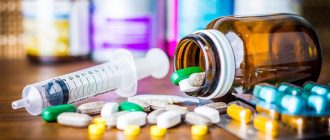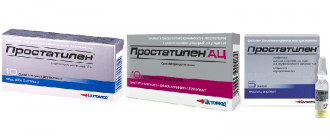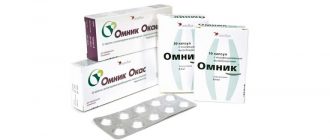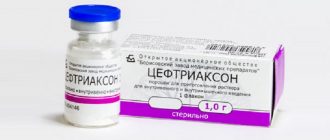This is a second-generation fluoroquinolone antibiotic that affects many pathogenic bacteria that can cause an inflammatory process in the prostate gland. Ofloxacin for prostatitis is used in the form of tablets or solution for infusion.
Release form and composition
The drug is produced in several dosage forms:
- pills;
- solution for intravenous administration;
- ointment;
- drops.
For inflammatory diseases of the prostate, only the first two dosage forms are prescribed.
The active component of the drug is ofloxacin.
Pills
Round in shape, enclosed in a film shell.
Produced in concentrations of 200 and 400 mg of active ingredient per 1 piece.
The following are used as excipients in tablets: povidone, cellulose, corn starch, calcium stearate, talc, aerosil.
Cardboard packs of 10 tablets packed in a blister are on sale.
Solution for infusion
Transparent liquid, light yellow in color.
Produced in 2% concentration of the active substance.
Sodium chloride and water for injection are used as additional components.
Bottles made of dark or light glass, 100 ml in volume, packed in a cardboard box, are available for sale.
pharmachologic effect
Ofloxacin is an antibacterial agent that affects most pathogens. They are sensitive to it to varying degrees:
- chlamydia;
- staphylococci;
- enterococci;
- salmonella;
- mycoplasma;
- ureaplasma and others.
When the drug enters the body, it blocks DNA gyrase in the affected cells, killing them. This helps stop the development of infection.
Indications
Ofloxacin is used for many diseases of infectious origin:
- pelvic organs (prostatitis, cervicitis and others);
- reproductive system (orchitis, colpitis);
- ENT organs (tonsillitis, pharyngitis, otitis media and others);
- respiratory system (bronchitis, pneumonia);
- gonorrhea;
- chlamydia;
- bacterial inflammation of the skin and soft tissues.
Contraindications
The drug, like many antibacterial agents, has some contraindications for use. Treatment of prostatitis with Ofloxacin is unacceptable if:
- individual intolerance to the drug;
- epilepsy:
- condition after suffering from certain diseases (stroke, skull trauma, inflammation in the central nervous system);
- renal failure;
- disorders of the liver;
- with tendon damage caused by treatment with quinolones;
- G6PD deficiency (glucose-6-phosphate dehydrogenase).
Side effects that may occur as a result of taking this drug include:
- disruption of the gastrointestinal tract (stool problems, increased gas formation, abdominal pain);
- general weakness;
- dizziness and headaches;
- nausea, vomiting, disturbance of taste;
- allergic reaction (itching, burning, redness of the skin).
If at least one side effect occurs, you must stop taking it.
Instructions for use
The treatment regimen with Ofloxacin for prostatitis depends on the patient’s age group, the stage of the disease and the presence of additional factors.
Pills
The dosage of Ofloxacin for prostatitis cannot be more than 800 mg/day.
The daily dose must be divided into 2 times. Ofloxacin is taken for prostatitis before or during meals, so the medicine is absorbed faster, since the digestion process inhibits the absorption of the drug. The tablets should be taken without chewing, washed down with water.
The use of Oflaxacin for prostatitis lasts 10 days.
Solution for infusion
In case of acute prostatitis, for faster relief of symptoms, a course of drips with Ofloxacin solution may be prescribed. The dosage and duration of treatment are the same as when taking tablets - no more than 800 mg per day for 10 days.
The solution provides for drip administration lasting 30-60 minutes.
If the condition improves, it is advisable to continue treatment with tablets.
Analogs
If you experience discomfort after using the medication, you must seek a prescription for another drug.
Analogues include:
- Levofloxacin.
- Ciprofloxacin.
- Tavanik.
- Glevo.



